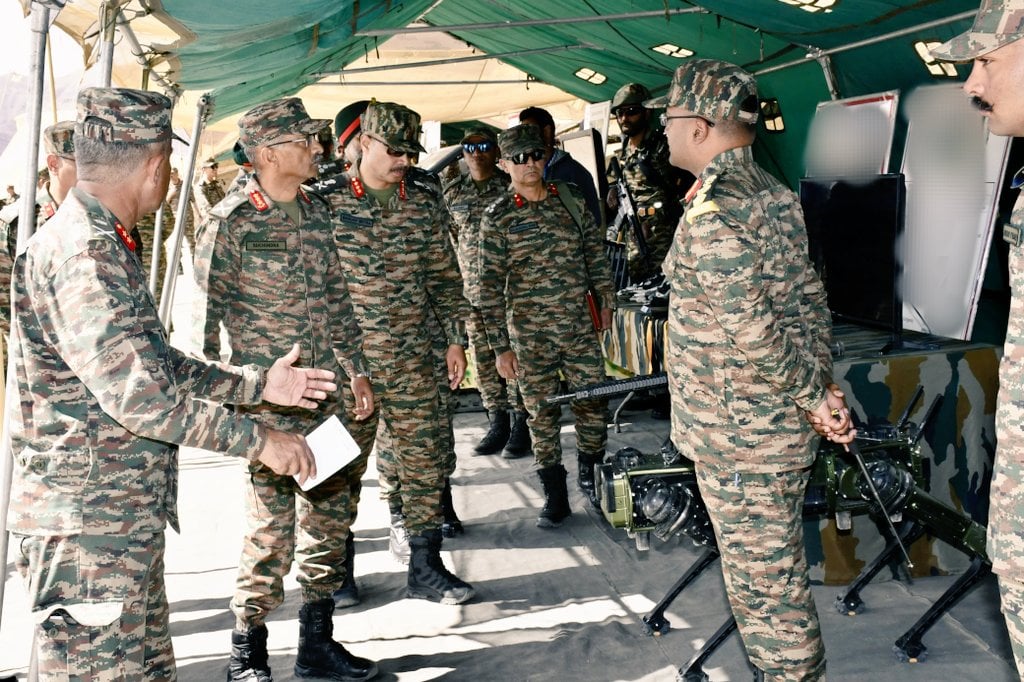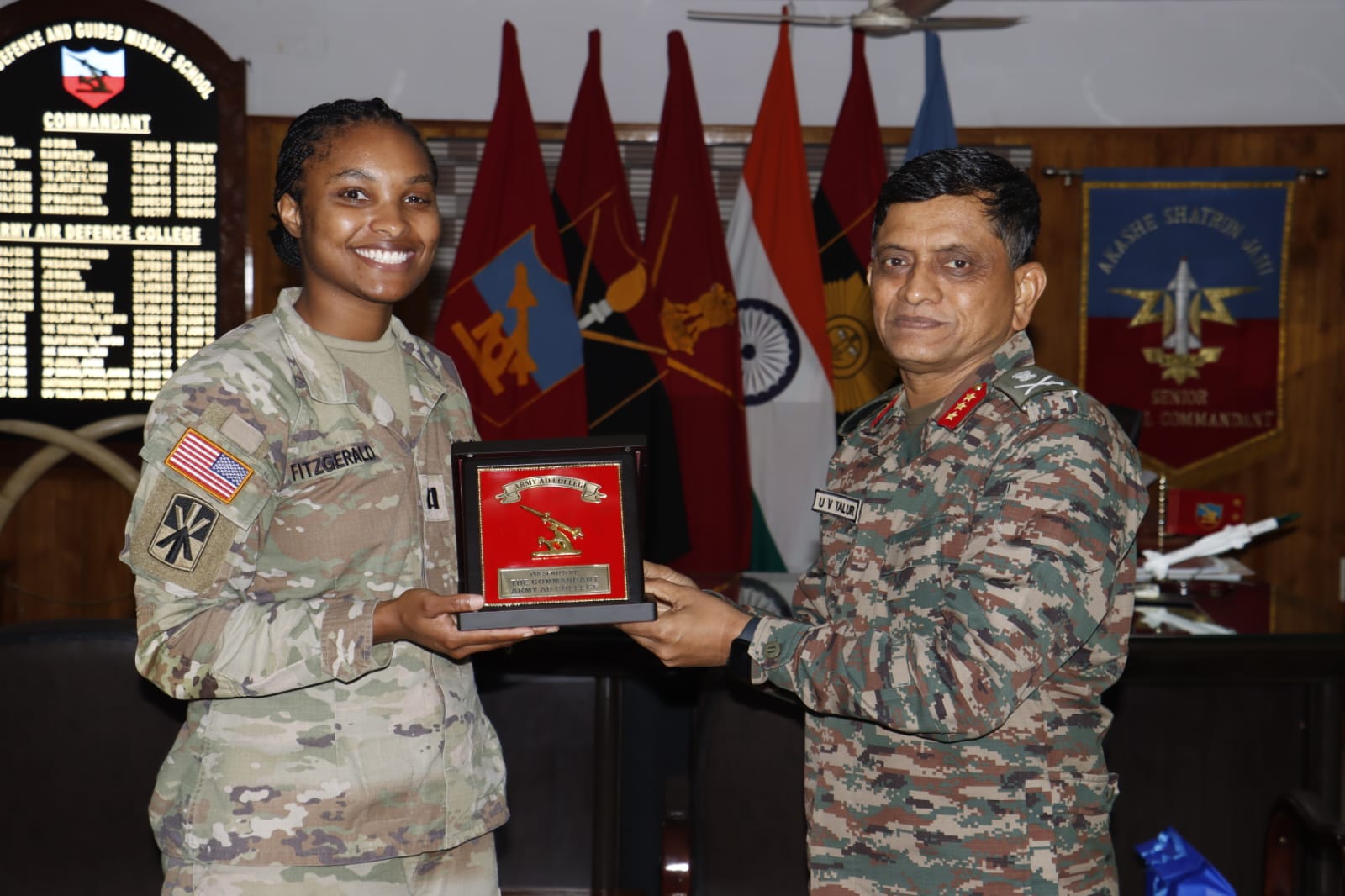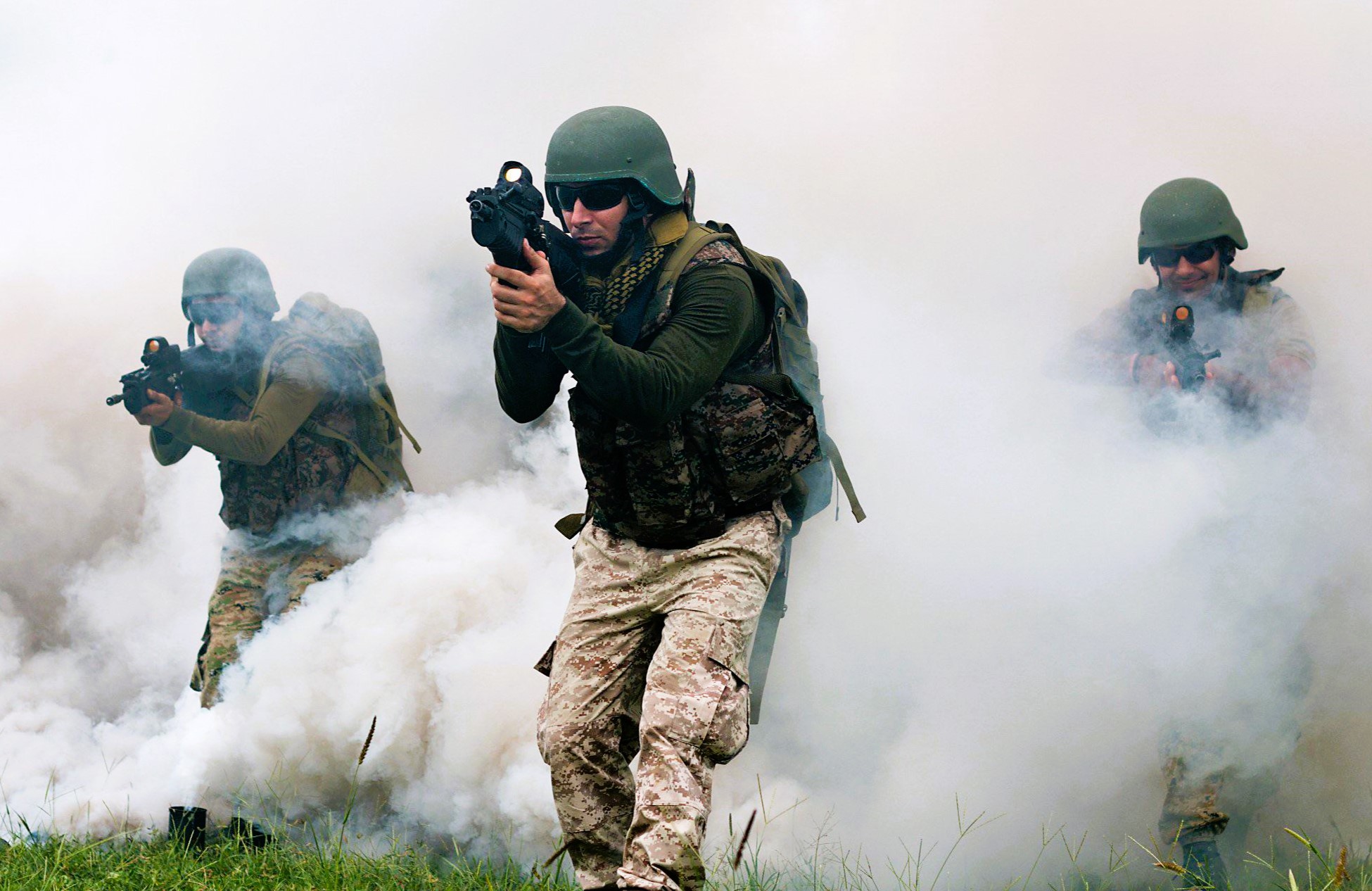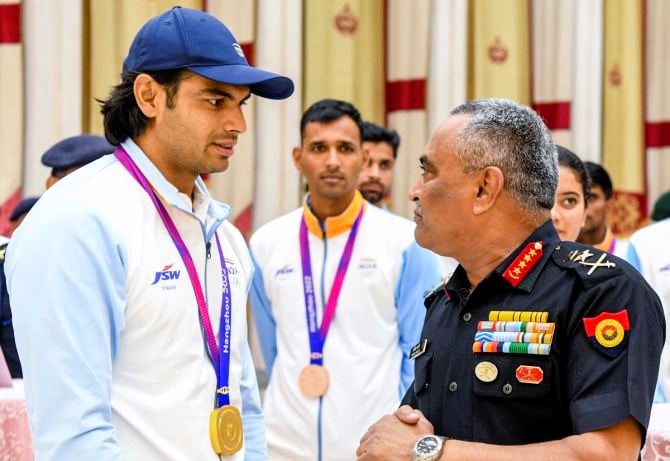Lt Gen Dhiraj Seth Evaluates Operational Preparedness and Technological Initiatives at Dakshin Bharat Area HQ
Lieutenant General Dhiraj Seth, AVSM, General Officer Commanding-in-Chief of Southern Command, recently visited the Headquarters of Dakshin Bharat Area, where…
Lt Gen MV Suchindra Kumar Reviews Operational Preparedness at Nanak Hill Military Station, Ladakh
Lieutenant General MV Suchindra Kumar, Army Commander Northern Command, recently visited forward areas, including the Nanak Hill Military Station in…
Army Air Defence College Hosts US Army Experts for Counter Unmanned Aerial Systems Workshop
The Army Air Defence College (AAD College) in Gopalpur recently hosted a team of four Subject Matter Experts (SMEs) from…
Lt. Gen. Devendra Sharma Visits Counter Insurgency & Jungle Warfare School in Vairengte
Lt. Gen. Devendra Sharma, General Officer Commanding-in-Chief of the Army Training Command (ARTRAC), recently visited the Counter Insurgency & Jungle…
Core Values Of Indian Air Force Every Aspirant Must Know
Joining the prestigious Indian Air Force (IAF) is a dream for many young individuals seeking to serve their nation with…
Why Isn’t Subedar Major Neeraj Chopra Getting an Officer Rank in the Indian Army?
Update on 14 May 2025: Neeraj Chopra Conferred Honorary Lieutenant Colonel Rank by Indian Army Following Neeraj Chopra’s historic silver…






